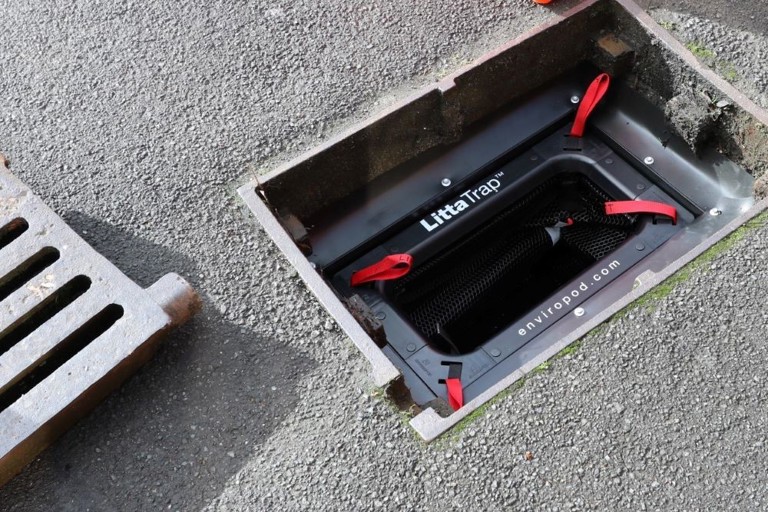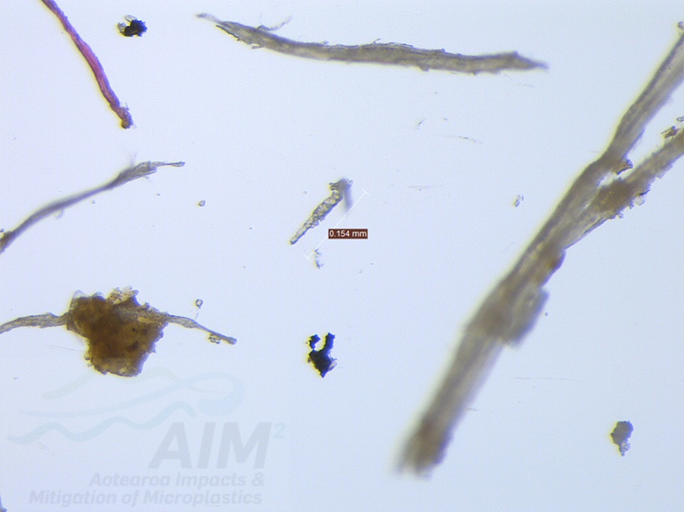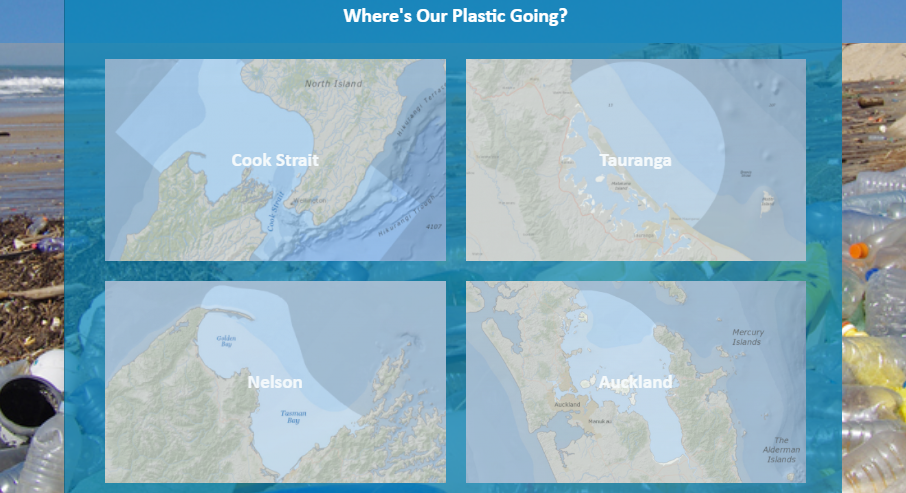Coastal Litter Monitoring in Northland
Plastic Pollution
Plastic pollution is a global issue, yet local (regional) pathways are unknown. This StoryMap highlights collaborative research in Te Taitokerau (Northland), including stormwater and beach litter surveys on macroplastics and microplastics in recreational and geographically diverse areas. It aims to uncover the impacts and pathways of plastic pollution through efforts by regional council, iwi, hapū, and international researchers.

Plastics collected at Otuihau / Whangārei Falls (left) and a Great Shearwater (Ardenna gravis) containing 194 plastic particles.
The regional council has collaborated with external organisations to provide free and easy ways to help map and reduce litter in our waterways.
In the absence of research to assess plastic pollution pathways across Te Taitokerau, the regional council has developed and implemented several complementary projects in the region including:
- Collaboration with NorthTec (Te Pūkenga), District Councils, Whitebait Connection, volunteers, and Litter Intelligence to determine volume and types of macroplastics (> 5 mm in size) from stormwater networks across six northland towns to compare against beach litter surveys.
- Collaboration with iwi, hapū, NorthTec, volunteers, and Non-Government Organisations to determine the presence, shape, and polymer type of microplastics (< 5 mm in size) in marine and lake water, marine and lake sediments, and three species of shellfish.
How we designed the workflow of these projects
| Macro litter and plastic (larger than 5 mm) | Microplastic (smaller than 5 mm) |
|
Stormwater (LittaTrapTM) survey Beach litter surveys |
Marine and lake sediments
Marine and Lake trawls |
| Summary | |
|
This report tracks plastic pollution from stormwater to shellfish in Te Taitokerau (Northland). Macro to Micro, plastic pathways, deposition, and densities within Te Taitokerau (PDF 2.93 MB) |
|
Stormwater (LittaTrap™) project
Plastic pollution poses a significant threat to oceans, harming wildlife, and coastal beauty. Collaborating with multiple organisations, NRC deployed LittaTraps™ at various sites to gauge plastic and litter inflow into rivers and estuaries. These cost-effective nets were installed in stormwater grates to intercept pollutants such as plastic.
Auditing trap contents quarterly for a year, 51 traps captured 21,006 items. NRC estimate that 13.2 million litter items enter Northland's urban stormwater drains annually, with over 70% being plastic. Capture rates varied widely among sites, from 26 to 2,409 items. This data will guide targeted efforts to reduce coastal litter and enhance preservation through education and mitigation measures.
Litter Intelligence
Led by New Zealand charity Sustainable Coastlines, the programme works in close collaboration with the Ministry for the Environment, Department of Conservation and Statistics New Zealand. The regional council has two sites in this monitoring programme, Hātea River in Whangārei Harbour, and Pah Road in Onerahi.
Learn more about Litter Intelligence, view insights, and download results
Microplastic surveys
Local iwi, hapū and NRC have partnered with the Institute of Environmental Science and Research (ESR) and Scion for a vital research initiative focused on microplastic contamination in Northland. This effort contributes to the nationwide 'Aotearoa Impacts and Mitigation of Microplastics Project’, aiming to establish baseline data on microplastic levels across various environments, shedding light on associated risks, including impacts on ecosystems and primary industries.
Microplastics, fragments under 5mm originating from larger plastic items, pose severe environmental threats, infiltrating marine ecosystems via sewage, stormwater, runoff, and marine activities. Research involves sampling sand from ten northland beaches, shellfish, and water for analysis, conducted by Kaitiaki and NRC personnel.
Watch the microplastic survey video
Te Tai Tokerau Debris Monitoring Project (TTTDMP)
NRC and NorthTec have created an easy way to report and display litter along Northland’s waterways using the Marine Debris Tracker App:
- Can be done anytime
- App is easy to install and use (Android and Apple)
- Can be done as an individual or as a group
- Categories compatible to Sustainable Coastlines Citizen Science Litter Monitoring Programme
The App is free, works offline and maps litter items collected using your device’s in-built GPS. The TTTDMP litter categories are paired with the Sustainable Coastlines Citizen Science Litter Monitoring and the International UNEP/IOC Guidelines.
An example of the TTTDMP map using Marine Debris Tracker at Whangaumu Bay.
Want to learn more and start tracking?
Visit the Marine Debris Tracker website to find out how to start tracking
If you are submitting data publicly using this project, please copy (cc) your data to: tttdmproject@gmail.com
Monthly (Whangārei) Clean-ups
For Our Real Clean Environment (F.O.R.C.E) run the ‘Love Whangārei Monthly Clean Ups’ at different locations around Whangārei and work towards more waste minimization projects.
You can check them out at: www.force.org.nz
Sea Cleaners
Sea Cleaners remove rubbish from the sea, harbours and oceans. To get involved, go to: seacleaners.com
The Ocean Plastic Simulator is an interactive online tool that shows how plastic waste moves around New Zealand’s coastline. It uses regional models of tides, winds and currents to predict how plastic moves and where it will end up.
Visit the Ocean Plastic Simulator to see where our plastic is going
Guidelines and reports
The international guidelines and the council's report on the litter monitoring trial are available below:
- Stay connected: 0800 002 004 | Call us toll-free on between 8am and 4:30pm, Monday to Friday
- NRC Incident Hotline: 0800 504 639 | Report pollution or marine incidents toll free on our 24/7 Incident Hotline.





